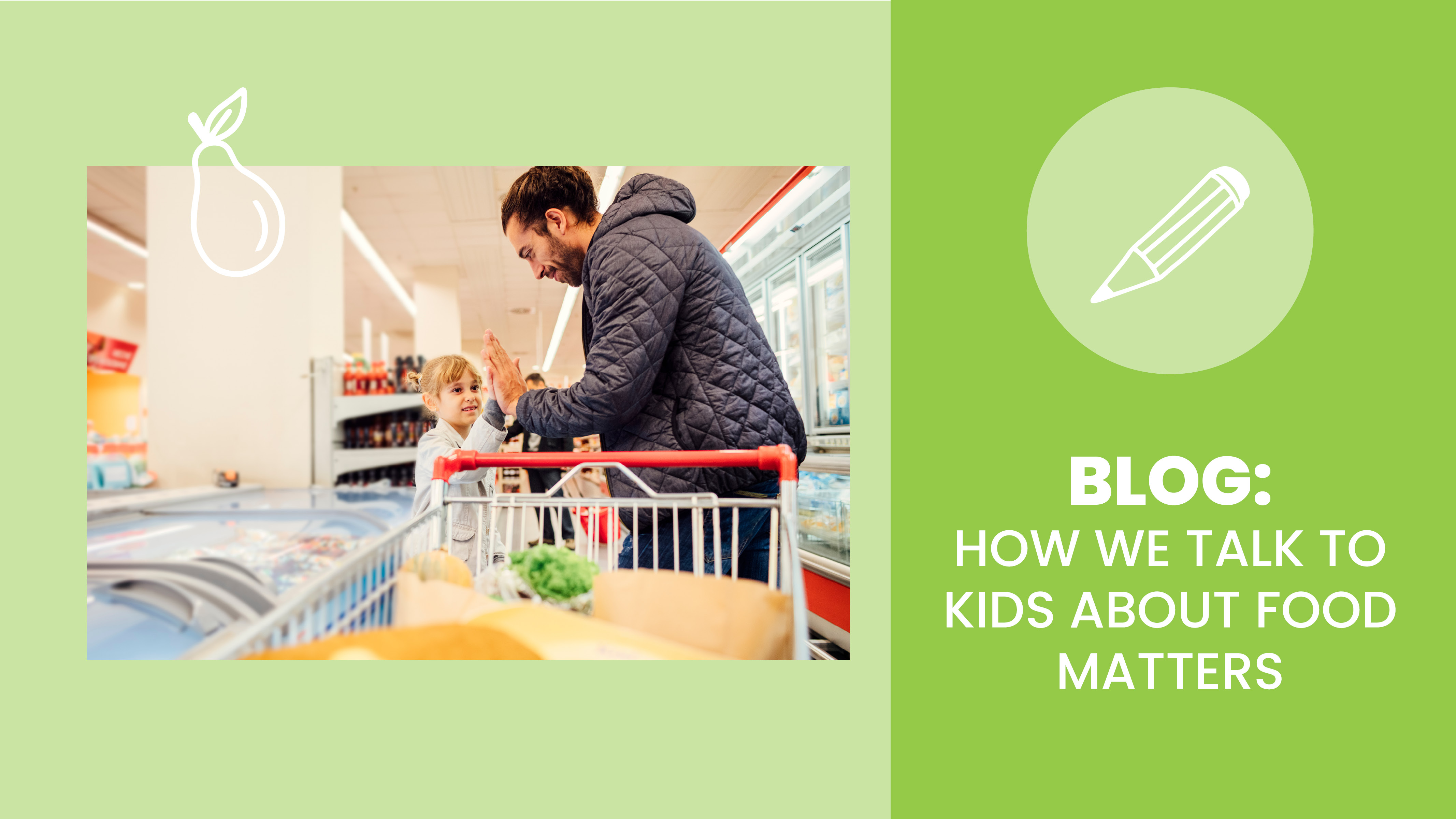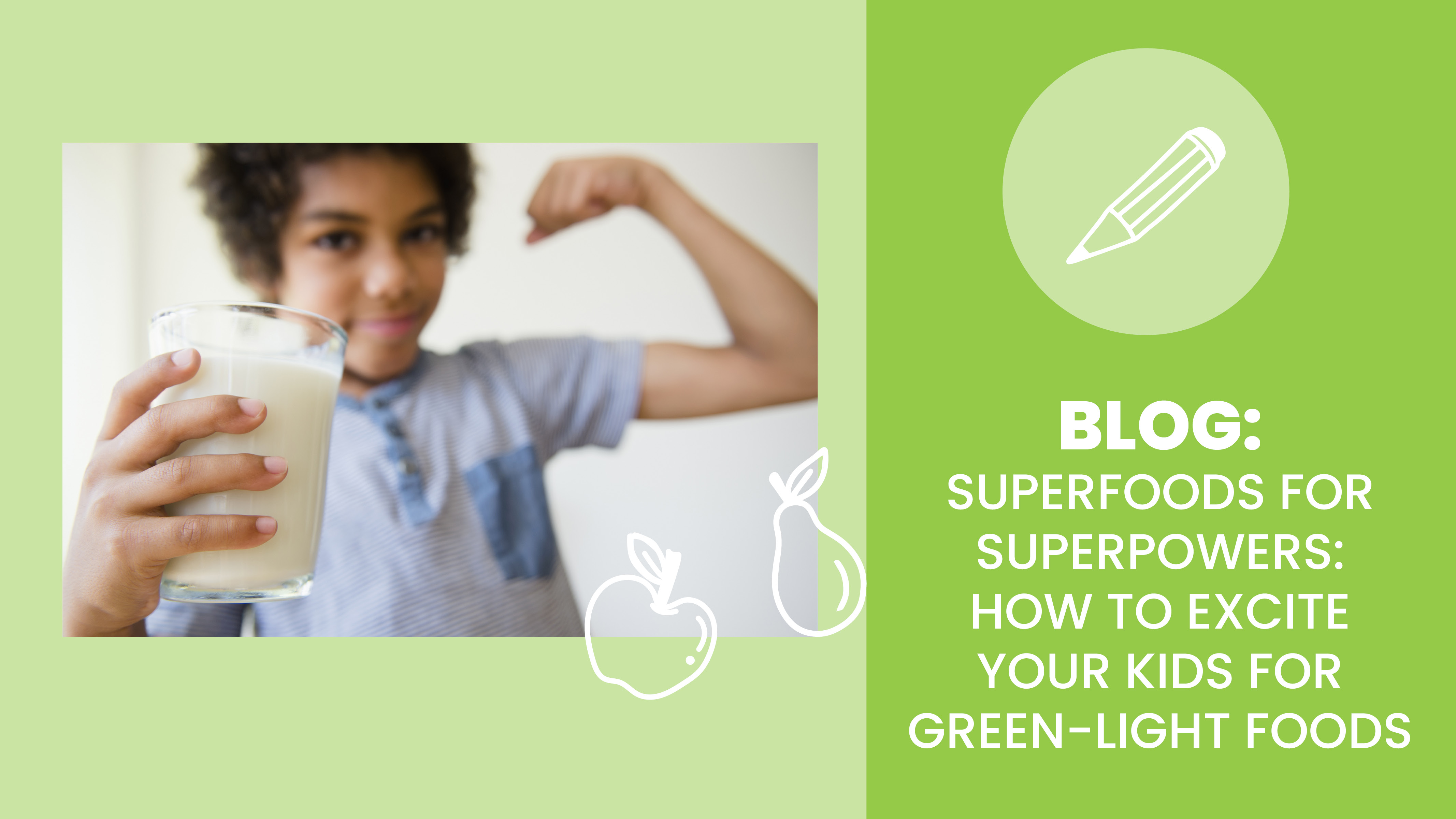If you’re wondering where to start when it comes to talking to kids about food, you’re not alone. But even though it can be tough to navigate, having conversations about food with your kids is important since their relationship with food starts during childhood. According to the American Academy of Pediatrics (AAP), healthy eating habits start early in life when taste preferences are forming, and creating healthy eating habits in young children can be one of the best predictors of diet in adulthood.
To help you and your kids think about food choices, we recommend using the Stoplight Model. Instead of teaching kids to label foods as “good” or “bad,” they’ll learn that some foods are simply more nutritious than others. Using the Stoplight Model, you can also teach your kids that food is fuel for their bodies. For example, instead of kids thinking that green foods are “good” for them, they can learn that “green foods help make my bones and teeth strong and fuel my body to fight off sickness.” By giving your child a positive reason to eat the food rather than just labeling it as “good,” you are promoting a positive relationship with the green-light food and motivating them to make healthy choices.
On the other hand, if you label a cupcake as “bad,” you can create negative emotions associated with that food. If a child eats the cupcake and knows that you view it as “bad,” they might begin to view themselves negatively since they made a “bad” choice. Instead of creating these labels, try to teach your kids that food is just food and that some foods will fuel their bodies more than others, but that does not make foods “good” or “bad.”
In addition to fit’s Stoplight Model, we spoke with a Sanford Health Dietitian, Annie Jacobson, to give you more expert advice.
How can you explain to kids in an age-appropriate manner that there are no good or bad food choices?
“Healthy eating is all about balance, no matter the age. With kids, I like using the MyPlate graphic so they can visualize where each food group fits in a healthy meal. Explaining that each food group fuels our bodies and brains in different ways encourages kids to eat a variety of foods which is best rather than just eating one type of food at mealtime. Eating a variety of foods helps kids think positively about each food group rather than labeling one ‘good’ or another ‘bad.’”
Additionally, if you can create well-balanced meals using the MyPlate graphic, this can give kids more options. By giving your kids a variety of food on the table, you can let them make decisions on what they’d like to eat while giving them freedom to explore what they like. Along with giving them independence, trust your child to eat instinctually. Rather than forcing your child to finish all their food, allow them to eat more when they’re hungry and stop when they’re full even if their plate isn’t clear. By trusting your child’s instincts, you’re encouraging them to listen to their bodies.
When are some ideal times or situations for talking to kids about food?
Taking your kids to the grocery store can be a great time to talk about different foods together. You can even add the Stoplight Model to the activity by pointing out different green, yellow, or red-light foods. By doing this, kids can learn where different types of foods are in the store, and they can start to recognize certain patterns. For example, kids might notice that foods without labels tend to be many of the green-light food choices and they’re commonly located in the perimeter of the store rather than the aisles.
Other than going to the store, Annie points out that “Mealtimes and food preparation are perfect times to discuss healthy eating. The opportunity to talk about foods with your kids during this time is another reason why family-style meals are important.”
What should I say to my child if they want to eat a red-light food?
“While encouraging and offering healthy and nutritious foods regularly is ideal, there will be times when kids have the opportunity to eat red-light foods,” Annie says. “Making these foods completely off-limits can make kids want them even more and can lead to eating larger portions or binging. Instead of limiting red-light foods completely, teaching your child moderation and portion control with red-light foods is the key.”
To help create an environment that allows kids to explore all kinds of foods, try serving treats with a meal and avoid using red-light foods, or treats, as a reward for behavior. You might say:
“I can see you’d really like to have some fruit snacks. Let’s have some with our lunch.”
“I can hear you want another cookie, and we can have another one tomorrow. Right now, there is other food on the table to eat if you are still hungry.”
Labeling foods as “bad” or restricting red-light foods may lead to unhealthy behavior such as sneaking food or hiding it. Instead, create an environment where your kids can explore all kinds of foods.
What’s your top tip for talking to kids about food?
Annie encourages you to “Try your best to make the conversation positive. Avoid putting all the focus on red-light foods and what they should not eat. By keeping the conversation positive, you can help your child build a healthy relationship with eating.”
Here are some questions and conversation starters you can use with your kids. Or, check out this article for tips on making food interesting for picky eaters.
- What have you eaten today and what did it taste like? Was it hot or cold? Smooth or bumpy? Is it sweet, sour, or salty?
- Think of a meal you had today and categorize the foods on your plate into the 5 sections of MyPlate (protein, grain, fruit, vegetable, dairy).
- Name a nutritious food to go with each letter in your name.
- Is your tummy telling you that you’re hungry or full?
Even with all this advice on how to talk to kids about food, it’s important to remember that kids are sponges. They will pick up on what you eat and why, so try new foods in front of your kiddos and do your best to eat a balanced diet so they are encouraged to do the same.
Ready for More? You Might Also Like:
Snacks vs. Treats: What’s the Difference?
Cheat Sheet for Caregivers: Snack List & Nutrition Tips for Kids


